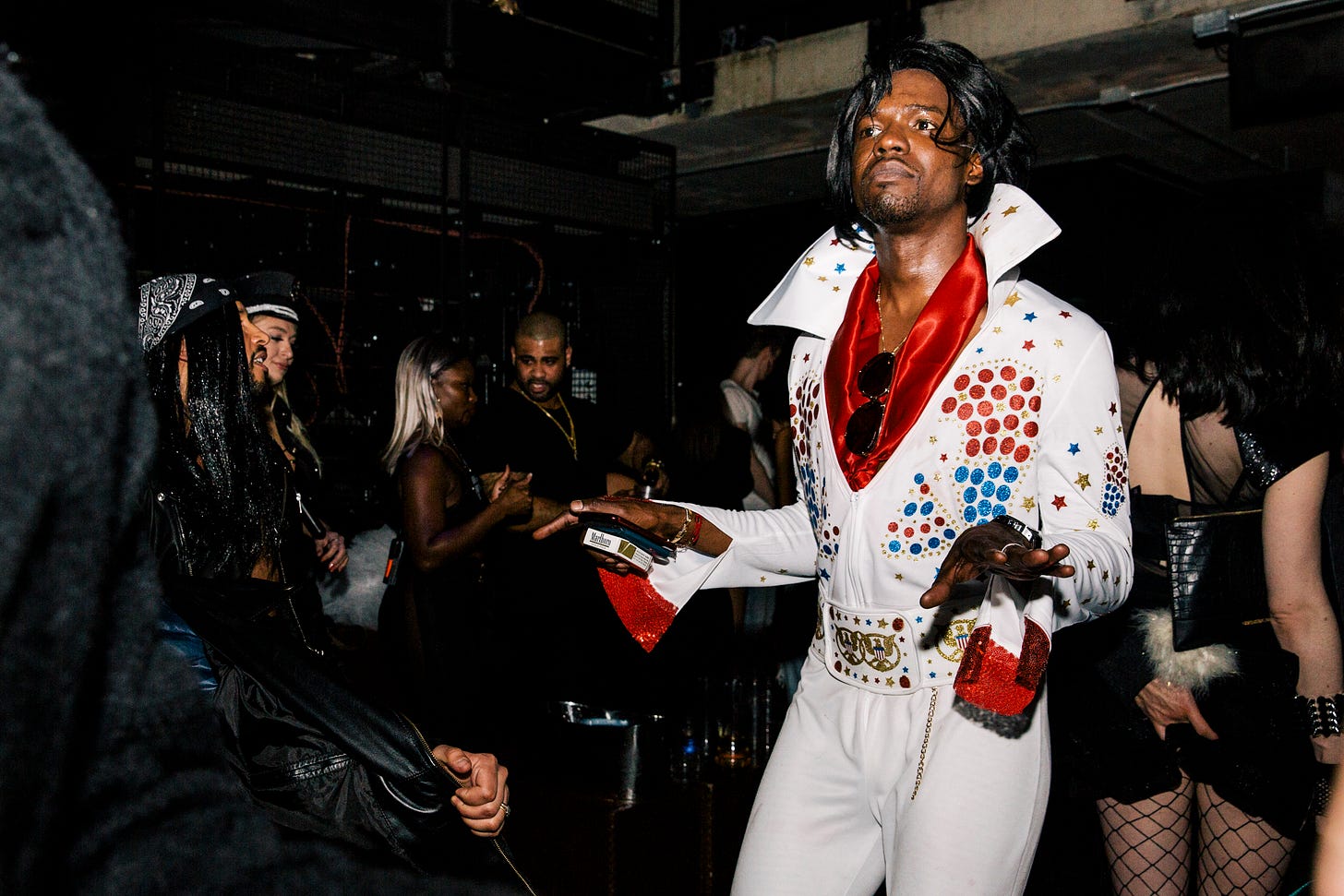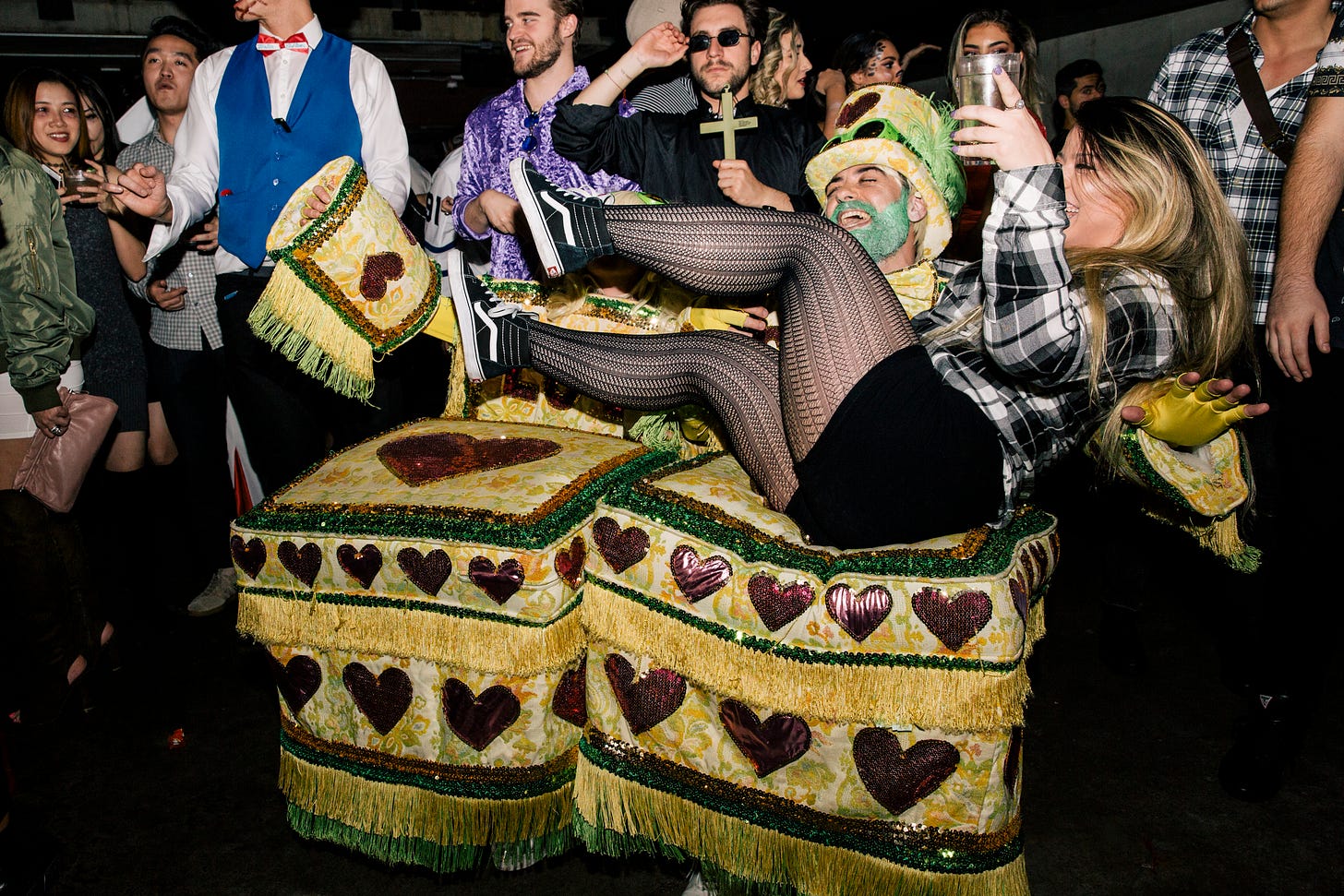Halloweirdness: A Season for Laughing at Darkness
Each October, we raise a glass to the reaper, and remind him he’s not invited to the afterparty.
Weird question.
What’s the appeal of a laughing skull?
We only ask ‘cause it’s been Halloween in the seasonal pharmacy aisle for a while, but now all those smiling skeletons and candy-colored grim reapers, friendly ghosts and happy ghouls are lurking on stoops worldwide.
So why is it that the frown of death gets turned upside down each October?
How does all of a sudden, the unsettling shit reserved for horror films and nightmares get repurposed into the accoutrements of celebration?
And suddenly everyone wants a giant inflatable demon with pre-recorded cackles looming over the front yard scaring kids?
Usually, that is not what we want. At all.
The Halloween season’s annual inversion of heavyweight cultural taboos around reality’s darker aspects is both too weird and too normal to clock.
But nonetheless, culturally speaking, we go from an extraordinary aversion to death and its consideration to this almost cartoonish embrace of its freakiest iconography.
And although the sugar-fueled, Spirit of Halloween-presented holiday is an English-speaking cultural phenomenon (a direct derivative of the ancient Celtic holiday Samhain) the underlying sentiment finds expression throughout cultures. Most famously, there’s Dia de Las Muertos in Mexico. There’s also the Hungry Ghost Festival in China, Pchum Ben in Cambodia, Obon in Japan. In an attempt to draw out patterns without misrepresenting any details, all of these holidays happen in the autumn of the year and revolve around a communion with or observance of the dead.
There seems to be a global human sense that in autumn, the veil between worlds goes thin.
Which tracks, psychologically speaking. Fall is the time of year when the leaves turn and begin to drop, when closure and cold and darkness show up on the horizon. It forces a consideration of mortality, which is basically scary.
And in a way, these holidays feel like pressure valves that allow societies to reframe their relationships with the circle of life’s rawer aspects.
Which is why the 4Loko energy of standard-issue Halloween decorations feels so secretly epic.
Because it’s a fist shaken at our biggest fear, a middle finger towards humanity’s terminal common denominator.
Instead of inspiring anxiety, the Amazon-delivered plastic skeleton that shoots candy out of its eyeballs defangs our mortality with laughter. Sexy Grim Reaper costumes overcome our fear of the dark with revelry.
The Halloween season, in all its consumerist absurdity, reveals the power of our laughter and delight to overcome even the deepest, scariest things about life.
‘Cause what is it they say about autocrats and dictators?
More than anything, they can’t stand to be laughed at. When their power isn’t taken seriously—when it isn’t feared—it diminishes. It could be said that our own mortality is the biggest, baddest dictator of them all.
And like all dictators, worth laughing at.
Get those costumes ready.
CONVICTS





